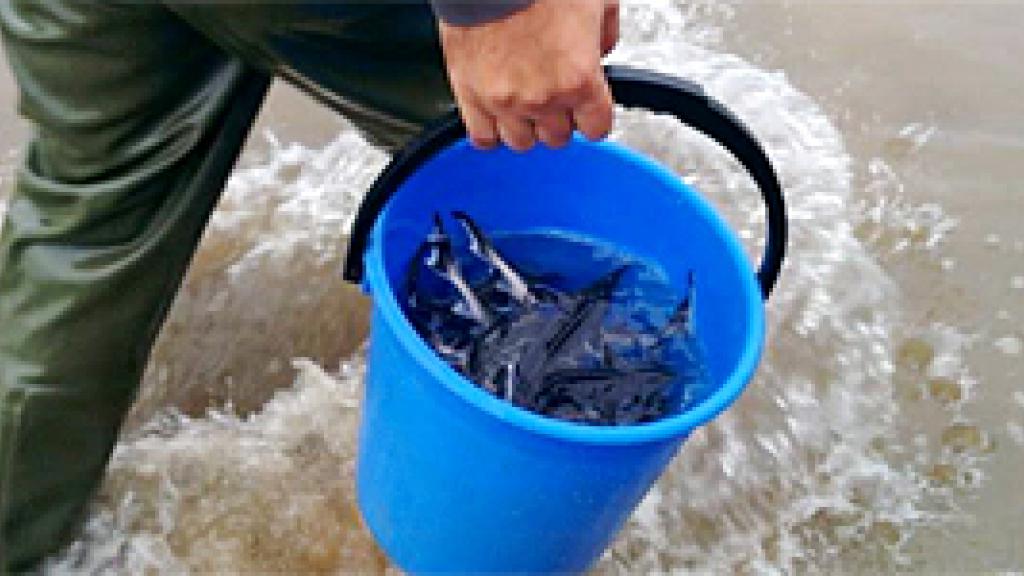5,000 Sterlets released into Danube
Belene, 18 November 2014. WWF has released some 5,000 sterlets into the Danube River today as part of a 50,000-strong sturgeon restocking programme. This is the first restocking of endangered sturgeons performed by a non-government organization in Bulgaria, after years of scientific research, climatic and biological challenges.

Despite outlasting the dinosaurs, sturgeons are vulnerable to overfishing and interference in their natural habitat globally, one example being the Iron Gates dams in the Danube River. According to the International Union for Conservation of Nature (IUCN), they are "more critically endangered than any other group of species."
The Danube River is home to some of the most important sturgeon populations globally. “Of 25 sturgeon species that inhabit the northern hemisphere, six live in the Danube, with Bulgaria and Romania holding the only – still – viable populations of wild sturgeons in the European Union”, says Stoyan Mihov, Conservation Manager of WWF Bulgaria.
The Sterlet sturgeon (Acipenser ruthenus) is the only Danube sturgeon that does not migrate into the Black Sea. It is also the smallest – it can reach one to sometimes three metres in length. Unlike the other Danube sturgeons, it is "only" an endangered species.
Its cousins are not so lucky – the Beluga sturgeon (Huso huso), the Russian sturgeon (Acipenser gueldensteadti) and the Stellate sturgeon (Acipenser stellatus) are critically endangered, while the Ship sturgeon (Acipenser nudiventris) and the European sturgeon (Acipenser sturio) are believed to be on the verge of global extinction.
The 5,000 sterlets released today were raised in conditions close to their natural environment in earth-fill pools, and fed with natural food. WWF tested the sterlets to make sure they are genetically pure because hybridization is a big problem for the survival of endangered species.
All sturgeon will be marked in the left front flipper with a magnetic tag, which is a millimeter and a half long. Each tag carries a unique number that can be read with a special reader. This will allow us to track the migration routes and breeding areas of the sturgeon. “When we know where they are, we can protect these ancient fish better”, adds Stoyan Mihov.
The restocking is part of the project "Implementing activities in the National Sturgeon Action Plan to improve the conservation of sturgeons in Bulgaria." The project is financed by Operational Programme "Environment 2007-2013." The first stage of the restocking took place on 13 November at Belene island in Bulgaria when some 6,000 sterlets were released in the river.





